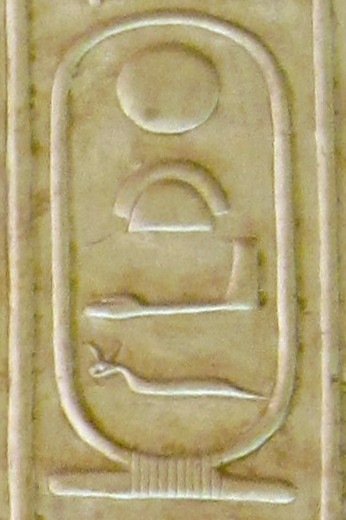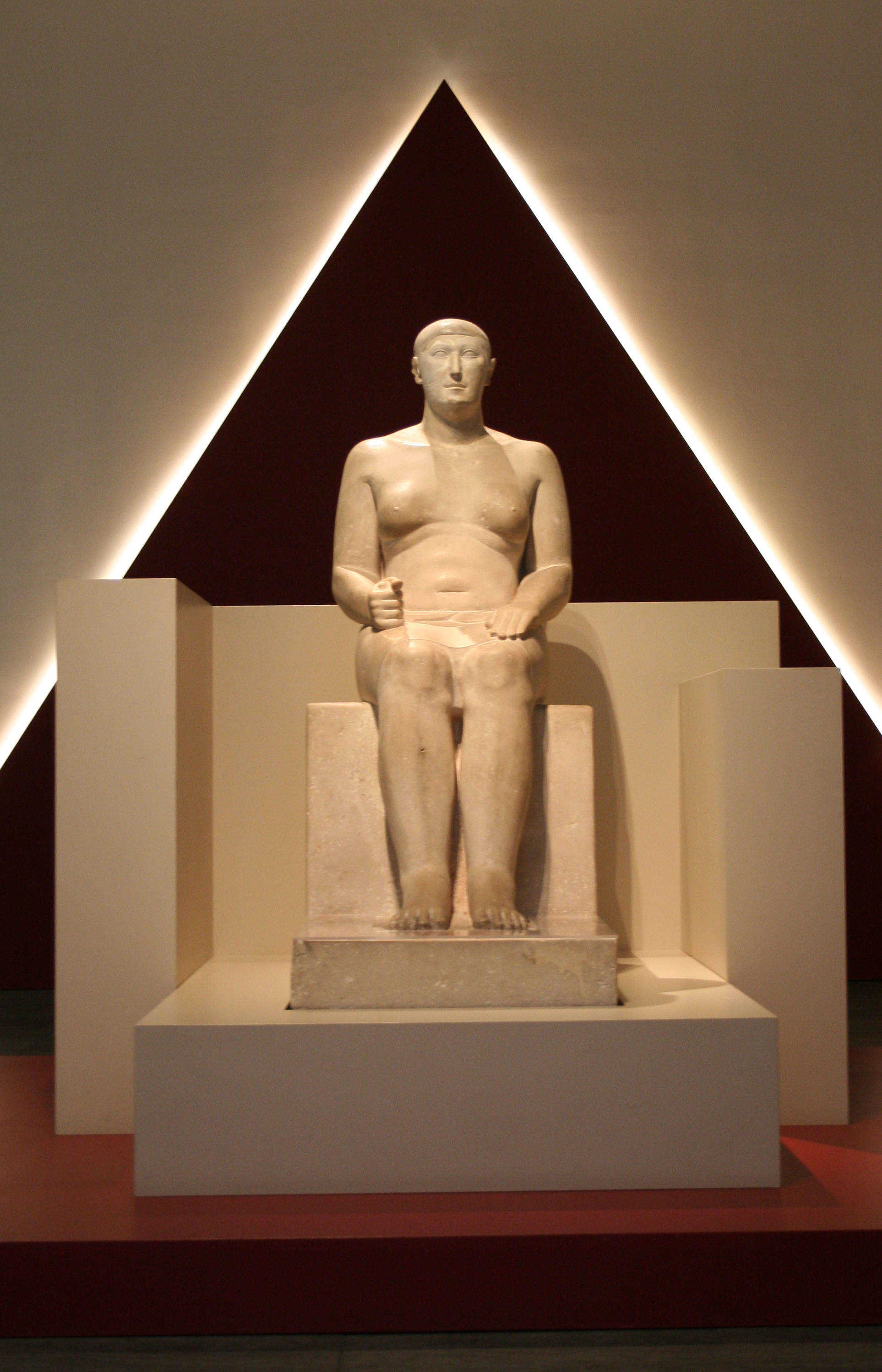|
Nebemakhet
Nebemakhet was a king's son and a Vizier (Ancient Egypt), vizier during the Fourth dynasty of Egypt, 4th Dynasty. Nebemakhet was the son of King Khafre and Queen Meresankh III. He is shown in his mother's tomb and in his own tomb at Giza.Dodson, Aidan and Hilton, Dyan. The Complete Royal Families of Ancient Egypt. Thames & Hudson. 2004. pp.50-61 Family Nebemakhet is depicted in the tomb of his mother Meresankh III (G7530-5440). His brothers Duaenre, Niuserre (A) and Khenterka as shown there as well, as is a sister named Shepsetkau. His maternal grandfather was the Crown Prince Kawab. Nebemakhet was married to a lady named Nubhotep. In Nebemakhet's own tomb his brothers Duaenre and Niuserre are mentioned as well as a brother named Ankhmare. Nebemakhet's sister appears several times in scenes accompanying her brother.Hassan, Selim. Excavations at Gîza IV. 1932–1933. Cairo: Government Press, Bulâq, 1930. pp 125 - 150 Titles Nebemakhet was a ''King's Son of His Body'' and a ''H ... [...More Info...] [...Related Items...] OR: [Wikipedia] [Google] [Baidu] |
Meresankh III
Queen Meresankh III was the daughter of Hetepheres II and Prince Kawab and a granddaughter of the Egyptian pharaoh Khufu. She was the wife of King Khafre. Hetepheres also provided her daughter with a black granite sarcophagus decorated with palace facades for Meresankh's burial. Her tomb was discovered by archeologist George Reisner on April 23, 1927, with subsequent excavations undertaken by his team on behalf of Harvard University and the Museum of Fine Arts, Boston. Her sarcophagus and skeleton are today located in the Cairo Museum; the latter reveals that she was 1.54 metres (5'1") tall and between 50–55 years at her death. An anthropological study suggested, that she might have suffered from bilateral silent sinus syndrome. The tomb also contained a set of the earliest known canopic jars. A limestone statue depicting Queen Hetepheres embracing her late daughter Meresankh was found in her tomb and is today located in the Museum of Fine Arts in Boston.Dodson & Hilton, p. ... [...More Info...] [...Related Items...] OR: [Wikipedia] [Google] [Baidu] |
Khafre
Khafre (also read as Khafra and gr, Χεφρήν Khephren or Chephren) was an ancient Egyptian King (pharaoh) of the 4th Dynasty during the Old Kingdom. He was the son of Khufu and the successor of Djedefre. According to the ancient historian Manetho, Khafre was followed by king Bikheris, but according to archaeological evidence he was instead followed by king Menkaure. Khafre was the builder who made the second largest pyramid of Giza. The view held by modern Egyptology at large continues to be that the Great Sphinx was built in approximately 2500 BC for Khafre. Not much is known about Khafre, except from the reports of Herodotus, writing 2,000 years after his life. Family Khafre was a son of king Khufu and the brother and successor of Djedefre. Khafre is thought by some to be the son of Queen Meritites I due to an inscription where he is said to honor her memory. Kings-wife, his beloved, devoted to Horus, Mertitytes. King's-wife, his beloved, Mertitytes; beloved of ... [...More Info...] [...Related Items...] OR: [Wikipedia] [Google] [Baidu] |
Central Field, Giza
The Central Field is located to the east of Khafre's causeway and extends to the pyramid town of Queen Khentkaus I. One of the main excavators of the central field is Selim Hassan.Porter, Bertha and Moss, Rosalind, Topographical Bibliography of Ancient Egyptian Hieroglyphic Texts, Statues, Reliefs and Paintings Volume III: Memphis, Part I Abu Rawash to Abusir. 2nd edition (revised and augmented by Dr Jaromir Malek, 1974). Retrieved from gizapyramids.org The central field is located at the site of some large stone quarries that provided the stones for the construction of the first two pyramids at Giza. Hence the tombs date to the later part of the Fourth Dynasty and later. The tombs from the 4th Dynasty include those of queens Persenet, Khamerernebty II, Rekhetre, Khentkaus I and Bunefer Bunefer was an ancient Egyptian queen from the 4th or 5th dynasty. It is not known which king she was married to. Bunefer was buried in tomb G 8408 in the Central Field of the Giza Necropoli ... [...More Info...] [...Related Items...] OR: [Wikipedia] [Google] [Baidu] |
Vizier (Ancient Egypt)
The vizier () was the highest official in ancient Egypt to serve the pharaoh (king) during the Old, Middle, and New Kingdoms. Vizier is the generally accepted rendering of ancient Egyptian , etc., among Egyptologists. The ''Instruction of Rekhmire'' (''Installation of the Vizier''), a New Kingdom text, defines many of the duties of the , and lays down codes of behavior. The viziers were often appointed by the pharaoh. During the 4th Dynasty and early 5th Dynasty, viziers were exclusively drawn from the royal family; from the period around the reign of Neferirkare Kakai onwards, they were chosen according to loyalty and talent or inherited the position from their fathers. Responsibilities The viziers were appointed by the pharaohs and often belonged to a pharaoh's family. The vizier's paramount duty was to supervise the running of the country, much like a prime minister. At times this included small details such as sampling the city's water supply. All other lesser supervis ... [...More Info...] [...Related Items...] OR: [Wikipedia] [Google] [Baidu] |
Giza Necropolis
The Giza pyramid complex ( ar, مجمع أهرامات الجيزة), also called the Giza necropolis, is the site on the Giza Plateau in Greater Cairo, Egypt that includes the Great Pyramid of Giza, the Pyramid of Khafre, and the Pyramid of Menkaure, along with their associated pyramid complexes and the Great Sphinx of Giza. All were built during the Fourth Dynasty of the Old Kingdom of Ancient Egypt, between 2600 and 2500 BC. The site also includes several cemeteries and the remains of a workers' village. The site is at the edges of the Western Desert, approximately west of the Nile River in the city of Giza, and about southwest of the city centre of Cairo. Along with nearby Memphis, the site was inscribed on the UNESCO World Heritage List in 1979. The Great Pyramid and the Pyramid of Khafre are the largest pyramids built in ancient Egypt, and they have historically been common as emblems of Ancient Egypt in the Western imagination. They were popularised in Hellenistic ... [...More Info...] [...Related Items...] OR: [Wikipedia] [Google] [Baidu] |
Fourth Dynasty Of Egypt
The Fourth Dynasty of ancient Egypt (notated Dynasty IV) is characterized as a "golden age" of the Old Kingdom of Egypt. Dynasty IV lasted from to 2494 BC. It was a time of peace and prosperity as well as one during which trade with other countries is documented. The Fourth Dynasty heralded the height of the pyramid-building age. The relative peace of the Third Dynasty allowed the Dynasty IV rulers the leisure to explore more artistic and cultural pursuits. King Sneferu's building experiments led to the evolution from the mastaba-styled step pyramids to the smooth sided “true” pyramids, such as those on the Giza Plateau. No other period in Egypt's history equaled Dynasty IV's architectural accomplishments.Egypt: Land and Lives of the Pharaohs Revealed, (2005), pp. 80–90, Global Book Publishing: Australia Each of the rulers of this dynasty (except for Shepseskaf, the last) commissioned at least one pyramid to serve as a tomb or cenotaph. The Fourth Dynasty was the sec ... [...More Info...] [...Related Items...] OR: [Wikipedia] [Google] [Baidu] |
Duaenre
Duaenre was a vizier under Menkaure during the Fourth Dynasty of Egypt. His titles include those of ''king's son of his body'' (''za-nesut-khetef, zꜣ-nswt- ẖt .f''), ''hereditary prince'' (''iri-pat, jrj-pꜥt''), ''count'' (''hati-a,'' '' ḥꜣtj-ꜥ''), ''vizier'' (tAjtj), ''scribe of the divine book'' (''sesh-medjat-netjer, sš- mḏꜣt- nṯr''), ''mouth of Nekhen'' (''er-nekhen, r- nḫn''), and ''mouth of every Butite'' (''er-pe-neb, r- p- nb''). Family Dua(en)re was the son of King Khafre and Queen Meresankh III and thus grandson of Pharaoh Khufu and Crown Prince Kawab.Aidan Dodson & Dyan Hilton: The Complete Royal Families of Ancient Egypt. Thames & Hudson, 2004, pp.52, 56 A son is shown in one of the scenes in the hall of the tomb.Porter and Moss, Topographical Bibliography of Ancient Egyptian Hieroglyphic Texts, Reliefs, and Paintings; Part III The vizier Babaef II was probably a son of Duaenre. An inscription on a false door found in G 3098 (Called G 2098 ... [...More Info...] [...Related Items...] OR: [Wikipedia] [Google] [Baidu] |
Kawab
Kawab is the name of an ancient Egyptian prince of the 4th Dynasty. He was the eldest son of King Khufu and Queen Meritites I. Kawab served as vizier and was buried in the double mastaba G 7110–7120 in the east field which is part of the Giza Necropolis. Biography Kawab was the eldest son of Pharaoh Khufu and Meritites I and half-brother of pharaohs Djedefre and Khafre. He was possibly born during the reign of his grandfather Sneferu. Kawab married his sister Hetepheres II. They had at least three sons named Duaenhor, Kaemsekhem and Mindjedef and a daughter Meresankh III. Kawab died during the reign of his father so the next ruler was Djedefre, who married his widow Hetepheres II. It used to be believed that Djedefre had Kawab murdered, since Djedefre was buried in Abu Rawash, instead of Giza, which was the custom. Djedefre's pyramid was also vandalized, but it is now thought that the tomb was vandalized much later, that is, during Roman times.Dodson, Aidan and Hilton, Dya ... [...More Info...] [...Related Items...] OR: [Wikipedia] [Google] [Baidu] |
Priestess Of Hathor
Priestess of Hathor or Prophetess of Hathor was the title of the Priestess of the goddess Hathor in the Temple of Dendera in Ancient Egypt. Title The title is known to be given during the Old Kingdom of Egypt, and was at that point very powerful and prestigious. The mummies of the priestesses testify that they were decorated with a religious tattoo, covering the stomach around the area of the uterus. After the Middle Kingdom of Egypt, the title was often irregularly awarded the women of the royal family, typically princesses. History The rise, fall and extinction of the priestesses of Hathor are seen in ancient Egyptian culture. The women who wanted to become socially powerful usually took refuge in religion and took the charge of priesthood. Ancient Egyptian society took women's empowerment much more loosely than ancient Greece and ancient Rome. There women were given the right to their own property. However, after becoming a priestess, a woman is seen not only as an importan ... [...More Info...] [...Related Items...] OR: [Wikipedia] [Google] [Baidu] |
Princes Of The Fourth Dynasty Of Egypt
A prince is a male ruler (ranked below a king, grand prince, and grand duke) or a male member of a monarch's or former monarch's family. ''Prince'' is also a title of nobility (often highest), often hereditary, in some European states. The female equivalent is a princess. The English word derives, via the French word ''prince'', from the Latin noun , from (first) and (head), meaning "the first, foremost, the chief, most distinguished, noble ruler, prince". Historical background The Latin word (older Latin *prīsmo-kaps, literally "the one who takes the first lace/position), became the usual title of the informal leader of the Roman senate some centuries before the transition to empire, the ''princeps senatus''. Emperor Augustus established the formal position of monarch on the basis of principate, not dominion. He also tasked his grandsons as summer rulers of the city when most of the government were on holiday in the country or attending religious rituals, and, for ... [...More Info...] [...Related Items...] OR: [Wikipedia] [Google] [Baidu] |





